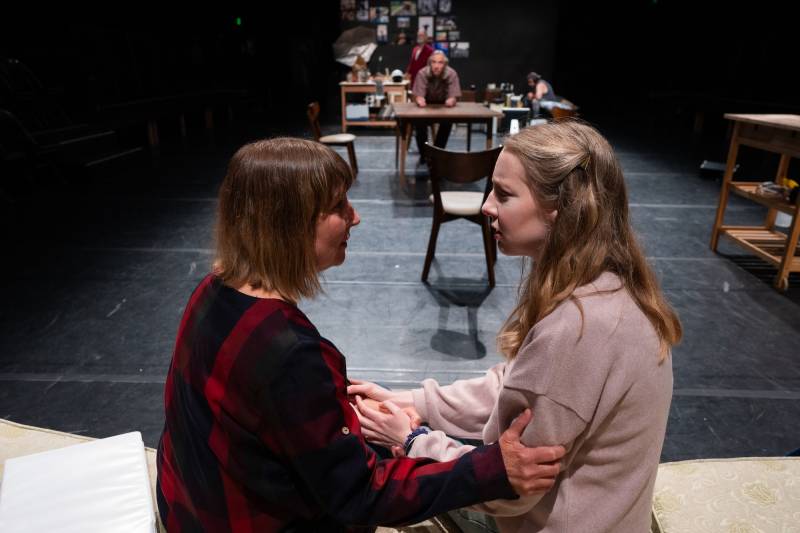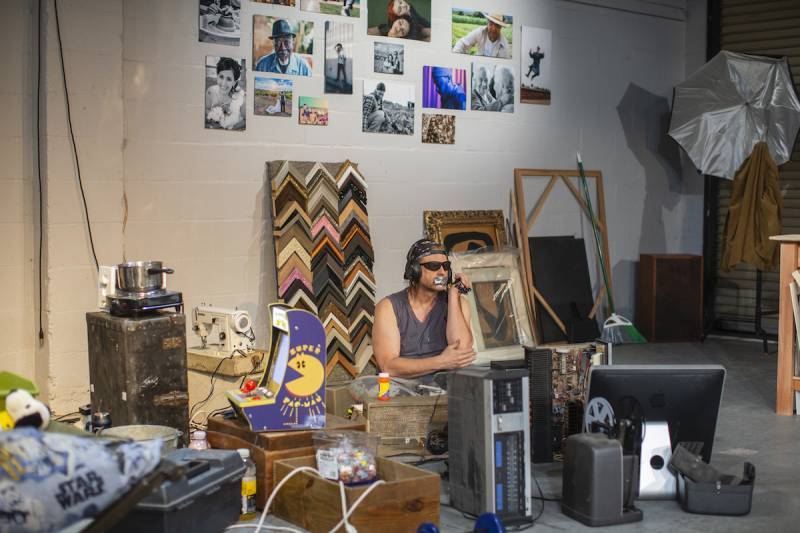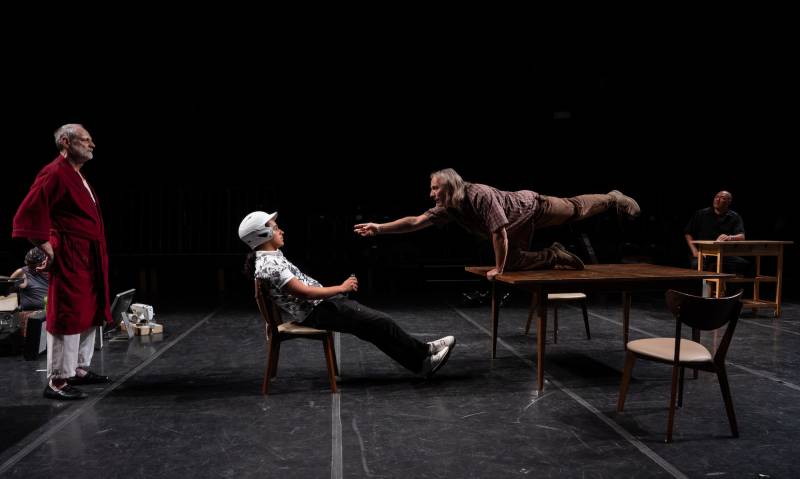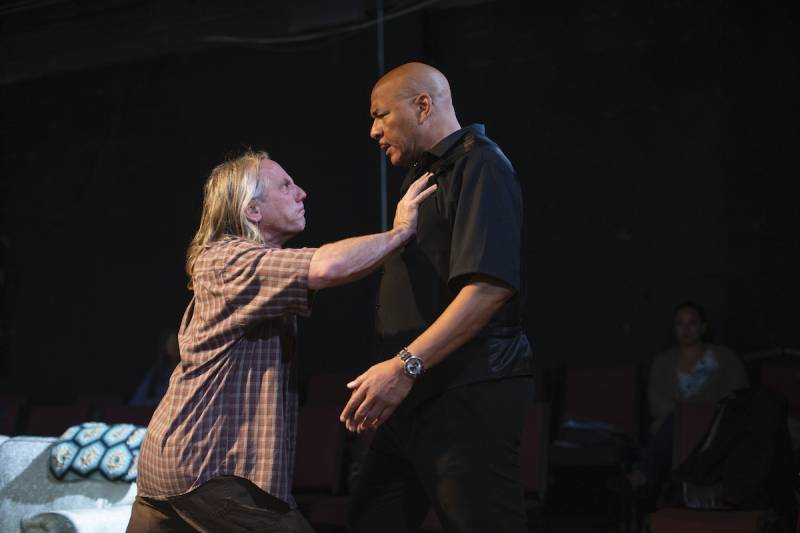It was 2019 when I first covered the Imaginists’ artistic collaboration with Hungarian director Árpád Schilling—a then-unwritten work examining American gun violence.
A lot has changed since that different, pre-COVID time. Yet as I write this review, in the wake of yet another mass shooting of schoolchildren, the topic is as painfully timely as when the Imaginists first conceived the production. The theater company first invited Schilling to Santa Rosa in 2015, whereupon the internationally acclaimed director learned about the fatal shooting of 13-year-old Andy Lopez by a Sheriff’s deputy—a devastating moment for Santa Rosa, where the Imaginists have created theater for 20 years.

“Schilling and [his partner] Lilla Sárosdi were absolutely horrified that the police would actually use their guns against citizens,” Imaginists co-founder Amy Pinto told me in 2019. Known for co-creating generative work with a social justice component, Schilling understood that, as a European, his “outsider” approach to this quintessentially American topic would be artistically fertile and potentially revelatory.
The resultant production is Someone Dies Again, which, after nearly two years of pandemic-related delays, premiered May 20 at Z Space in San Francisco, and opens a Santa Rosa run on Thursday, June 2.
Someone Dies Again simmers with the effects of one real-life catastrophe after another—but after setbacks, public health crises and heartbreaks, it emerges from the wreckage filled with purpose. The production examines our fraught relationship to guns and gun ownership, along with structures of white supremacy and American exceptionalism. Infused with uncomfortable rawness, and juxtaposed against skillfully choreographed theatricality, Someone Dies Again not only invites its audience in but bars the door behind them, underscoring societal complicity with what plays out onstage.

A gun is brought into immediate play during the first scene, when family patriarch Marty (G. Brent Lindsay) discovers it in his brother Larry’s (David Roby) possession. Larry’s been staying in the spare room ever since his trailer burned down in an electrical fire, keeping the handgun under his pillow as a good luck charm and sleeping aid. Its presence initiates an undercurrent of unease that permeates the rest of the piece. The implied threat of violence hangs over even such quotidian activities as a family birthday celebration and a trip to the grocery store.




